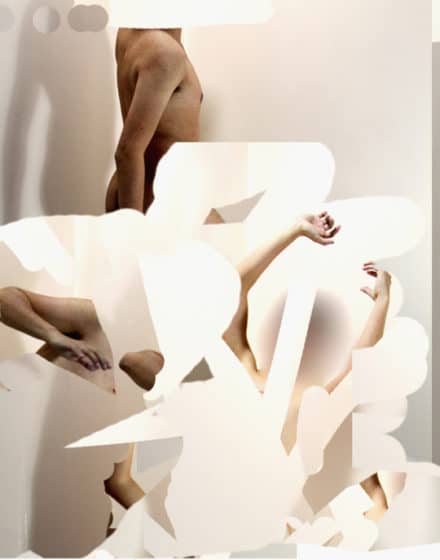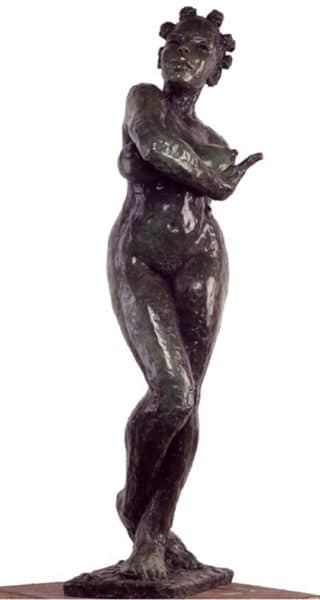Discrimination—it happens in every field and can take many forms. In the art industry, it’s the curator who leans in and says he really enjoys working with “cute little artist chicks like you.” Or the head of the arts council who asks you to make the lips of the mural’s main figure less full so that “more people will be able to relate to the piece.” Or the gatekeepers who stonewall, completely failing to acknowledge you or your work.
Faced with these dismissals, many artists are left wondering if it’s their work, their manner, or their connections that fell short. But the questioning goes even deeper for some, as they are forced to consider the possibility that the gatekeeper may have a problem with their color, gender, sexual orientation, size, ability, age, religion, class, or nationality.
Whether it’s art administrators, gallerists, journalists, or others, the people whose decisions impact artists’ careers are flawed, just like the rest of us. They are the product of their surroundings, absorbing and repeating the biases of their social group. But there’s no reason for artists to accept bigoted behavior. Regardless of what we look like, who we love, and how we pray, we can fight discrimination in the arts. Here’s are six steps we can take.
Recognize that Discrimination Exists

When it’s happening to me, my initial reaction is always doubt. No matter how often my gender or queer identity provoke discomfort or complicate my career, my first response to discrimination is denial.
Perhaps it’s not surprising that I have a hard time processing sexism and homophobia. I’m white, so I have always seen people who look like me on television and in politics. I’ve never had to fear that a police officer might harass me based solely on the color of my skin. In other words, my whiteness means that, generally speaking, people treat me pretty well. It also means that I sometimes find it challenging to identify discrimination when it occurs.
Worse still, my attitude makes it hard for me to recognize bigoted behavior that’s aimed at others. In the face of discrimination, my disbelief becomes the insult that’s added to the injury.
Listen to the Experiences of Others
As interdisciplinary artist Mark Anthony Martinez describes it, “If you’re a person who calls out oppressive behavior for what it is, you get labeled as ‘angry.’ Eventually, your colleagues start avoiding you altogether, or you start avoiding them, just to feel sane.” This tendency to turn away from the hard truths that others are trying to share with us only fuels the bigotry.
Ask for Help
You don’t have to confront discrimination alone—in fact, you shouldn’t. Society perpetuates the fear of difference, so we must work together to dismantle it.
When fighting a gatekeeper’s bigotry, you may find that the best option is to ask a well-connected advocate to intervene. These helpers might be gallery owners or art administrators from a different institution, or even someone who has a relationship with the problematic figure. They can talk privately with the person and help the gatekeeper to reconsider his/her words and actions.
If you’re having trouble finding someone to speak for you, consider telling your story publicly. Remember that this can be done with or without naming the gatekeeper, and you can use various platforms, from social media to news outlets. The goal is to turn an exchange between artist and gatekeeper into a broader conversation, inviting more people to learn from the situation.
Create Space for Marginalized Voices

As painter and sculptor Manuel Palacio points out, the tendency to set up special venues can be a kind of self-segregation, but these institutions can also play an important role in promoting the art of those who rarely get the spotlight. As Palacio puts it: “There is healing and knowledge in giving others a voice and listening.”
Avoid Becoming Your Own Censor
When you’re a part of an oppressed community, there’s a propensity to downplay the parts of yourself that aren’t considered mainstream enough. This is something that Palacio witnessed in art school: “Everything taught to me was based on a white-supremacist worldview.” While he enjoyed his education, he recognizes that the most insidious form of discrimination is self-discrimination.
Education and communication are the only possible antidote. As Martinez points out, white people (or those who can pass for white) will almost certainly dismiss the discrimination faced by people of color, UNLESS they have been educated about racism. We all need to be exposed to different ways of seeing the world; that’s where empathy is born, and it’s our only chance to change behavior that often arises from fear.
Stand Up for Others
The next time you read an article about a white, cis-gendered, able-bodied artist, why not seek out the work of an artist of color? Or promote the art of a transgendered artist on your social-media channels? Or blog about a disabled artist? If you notice that your city’s public-art program gives most of its commissions to straight artists, write the committee a letter suggesting several queer ones it might consider. When a fat female artist gives you an example of the sizeism and sexism she faces, tell her story to others. Seek out the venues in your community that are dedicated to diversity and inclusion, and support them.
Make it your business to amplify marginalized voices, even when it requires work or opens difficult discussions. You may say the wrong thing and offend someone along the way, but at least you’ll be working to make things better. Challenge that nervous silence, and you can change the world.







